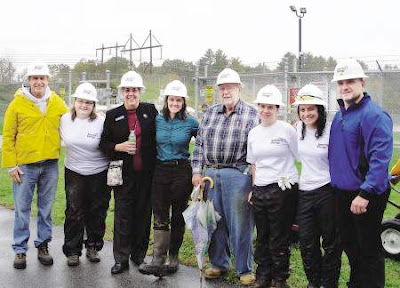This time of year, gardeners in the Northeast are all too familiar with the rabbits that have chosen their beds for buffets. But there’s a less abundant rabbit that you probably don’t know about, and that you would be much less likely to find in your garden. That cottontail, the New England cottontail, is the only one native to our region.
Over the last several decades, the New England cottontail has disappeared from much of its native land in the Northeast. Its homes in young forests, dense thickets and shrublands have grown too old to provide food and hiding places for this cottontail. Much of its old habitat has been developed or disconnected, and today, this unique native mammal faces possible extinction.
To prevent this, wildlife agencies and partners are pooling resources to rebuild habitat and populations that will reverse the rate at which the New England cottontail is disappearing from our region. Work that helps the cottontail reaches far beyond the rabbit hole, as more than 100 kinds of wildlife, such as the American woodcock, golden-winged warbler, and wood turtle, need it too.
The New England cottontail has a lot of unique partners working to ensure its future, from tribes, towns and students to private landowners, nature preserves and fire departments. To help this cottontail and its young forest friends, Spectra Energy and Maritime & Northeast Pipeline planted more than 600 native shrubs on their facilities located in Eliot, Maine.
 |
| Courtesy photo of team working on the grounds of the natural gas pipeline facilities in Eliot, Maine. |
"It's an ideal partnership -- we're able to create new wildlife habitat with volunteers willing to enhance their property in an area that is critical to New England cottontails and other animals," said Kelly Boland, the wildlife ecologist and EDF consultant who works with Spectra Energy and many other landowners to create habitat in Maine.
Not only are all landowners, from farmers to industry, encouraged to create habitat for the New England cottontail, but experts are also doing their part to rebuild wild populations. Biologists at the Roger Williams Park Zoo in Rhode Island have been breeding New England cottontails in captivity and this year released the first group into the wild on Patience Island off the coast of Rhode Island.
“2011 marked a very successful year in the zoo’s effort to help recovery the New England cottontail rabbit,” said Lou Perrotti, Director of Conservation Programs at the Zoo. “We’ve learned that we can successfully breed these wild animals in captivity and raise the young from birth through weaning. We’re hopeful that we will be able to contribute a genetically diverse group of young rabbits throughout the 2012 season to add to the newly established Patience Island population.”
 |
| Cyndi Maynard, University of Rhode Island, helping release cottontails on Patience Island at the end of March. Credit: Lou Perrotti |
The cottontails on Patience Island continue to do well, and a number of females at the zoo are expecting litters.
These are two examples of the extraordinary collaboration to restore the New England cottontail and young forest habitat. To meet our goal, conservationists need support from landowners, businesses and the public. Together, we can work to save the New England cottontail -- a beloved wild creature and a key to our natural heritage.
Rabbit Resources
- Newenglandcottontail.org – This site supports work across the region for New England cottontail.
- Controlled burn for New England cottontails at Mashpee National Wildlife Refuge
- Rhode Island students help build boxes for cottontails (video)
- Spectra Energy employees working to create cottontail habitat (video)
- The tale of Peter Rabbit, Environmental Defense Fund Newsletter (PDF)
- Rhode Island bird sanctuary receives $50,000 grant to develop habitat for cottontail
- More projects: http://www.newenglandcottontail.org/projects

No comments:
Post a Comment